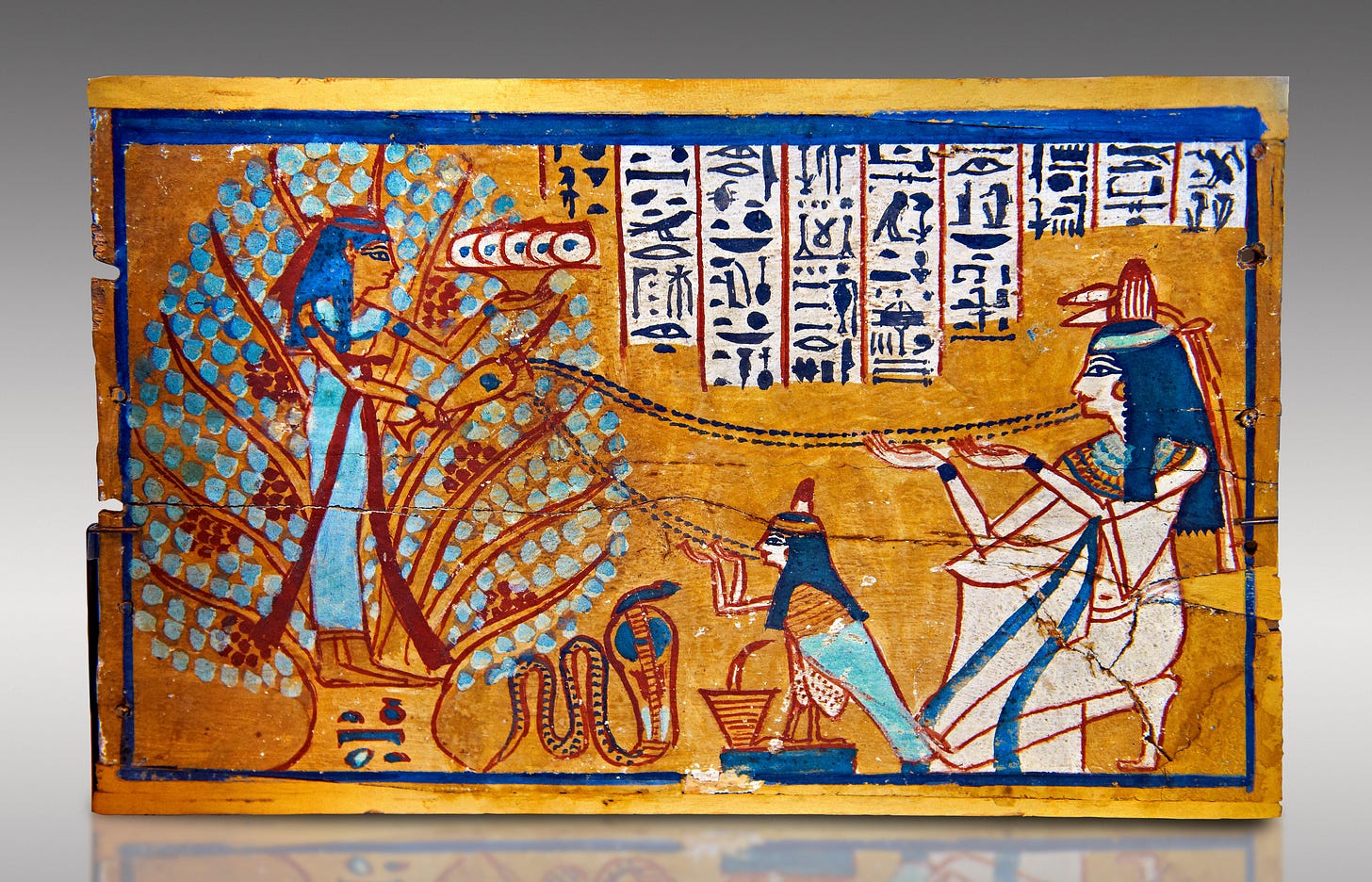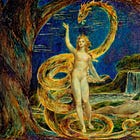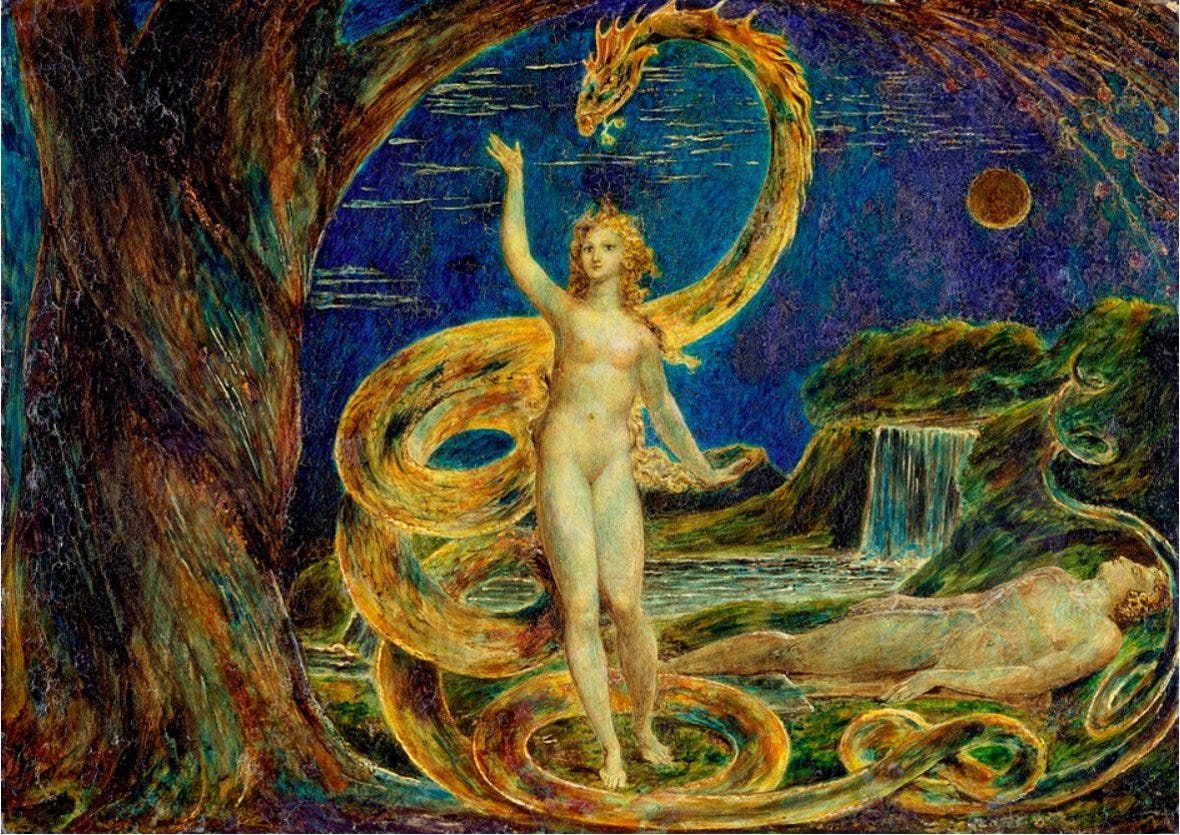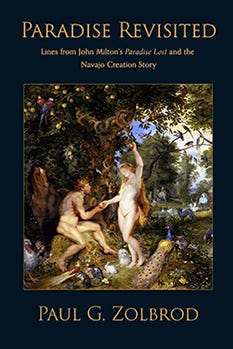
© 2024 Morgaan Rhys-Davies Sinclair, Ph.D. All Rights Reserved.
Please also note that all parts of this series are copyrighted. They are part of the Publisher’s Preface I wrote for Paul Zolbrod’s Paradise Revisited, which is coming out soon. If you’d like to take a look at this book, see the link at the bottom of this article.
***** Before you read this Part II, please read Part I. It’ll make MUCH better sense if you do. It’s free. [s]
In Part I, we explored two of the three major archaeological-historical discoveries and works that started to break open the deliberately occulted history of the Garden of Eden story:
First, in 1987, Gerda Lerner, after a long, deep, brilliant study of ancient history, proved that The Patriarchy did not always exist and that, in fact, in a history spanning at least 300,000 years, The Patriarchy had been the dominant social order for only the most recent 5,000 of those years.
Second, English professor, Milton maven, and Mennonite leader and spectacular Bible scholar Anna K. Juhnke broke down how the alleged biblical execration of Eve was not and is not biblical at all. There is NO damning of Eve in Genesis 2 and only a mention in Timothy I—with an immediate amelioration of any blame of her.
To sum up, here’s where Gerda and Anna left us:
From Gerda: The patriarchy did not always exist as some kind of “natural order of things”—that it was a conscious power-grab that took almost 2,500 years to completely pull off in Western culture.
From Anna: The Bible is NOT the source of the misogyny we experience at the hands of conservative Christianity today. In the same way that radical Islamists use the ahaditha that the Prophet Mohammad did not write to justify their misogyny, male Christian theologians and monks scoured writings that would be rejected for inclusion in the Bible to forge a mythology that vilified, and, in the end, murdered millions of women by associating them with dark magic and associating women by birth with Satan—who appears nowhere in the Garden of Eden story (and neither does an apple!)—and all evil. P.S. Shari’a law in Islam is not largely Qur’anic: it is 90% ahadiha, which means it’s hearsay or tacked-on theology not channeled by a prophet and not authored by God, but inserted by humans to support a particular desire, privilege or worldview that suits them. The very same is true of the interpretations of the Garden of Eden story.
As to The Fall and Original Sin tacked onto the Garden of Eden story, these were inventions by theologians writing more than a millennium after the Garden of Eden story was written.
It’s good to remember that the concept of “The Fall” and the doctrine of “Original Sin” was invented by St. Augustine in the 4th century AD—1300 years after the Garden of Eden story was penned! By the time Augustine was done, Original Sin was part of the canonical lexicon of the Roman Catholic Church, which some years later would carry out an Inquisition that would subject women and non-Christians to the bloodiest, cruelest torture-fest in the history of this species.
OK, now that we’ve caught up(!), let’s look again at the image at the top of the page.
The image above was painted 1600-2000 years ago in Egypt. It’s painting on a small box that holds ushabti—tiny figurines that represent the crafts people and servants who would accompany the deceased, who were royalty or aristocrats, into the afterlife and help to create and maintain a new world of great abundance and unfathomable bliss.
This particular ushabti box belongs to the lady in white on the right side of the image. Her name was Sched-es-en-mut, and she was a Chantress of Amun-Re. She chanted sacred rites at specific festivals during the Egyptian ritual year. She was likely politically well-connected and came from the upper classes.
That thingy on her head is a perfume block. The well-to-do, wanting to smell nice in the desert heat, would pay lots of money to buy these perfume blocks. They would very slowly melt in the sun during the day, gracing the hair with the most fantastic of smells.
Now in front of this deceased aristocrat is a pretty bird with blue wings. That’s her ba—one of the two souls she has. The ba is her essential personality, the closest analogy we have to our current definition of soul. The other Egyptian soul is the ka—which is a soul that is bound to the physical body and is sustained throughout life by food and drink. After death, the enlightened combination of the two—the fusing of the ba and the ka—ascends to a kind of immortality. However, the ka will still need feeding, so the ancient Egyptians stuffed their tombs with delicacies of all kinds and packed painted boxes like this one with ushabti who would serve them.
But in the tomb, and in the afterlife, both the deceased woman and the bird that is her ba, her spiritual soul, will need need sustenance. And in this image, she is getting it from the best:
On the left side of the image are symbols you’re going to recognize, in a form that will almost certainly be strange to you.
First you’ve got a serpent standing in from a woman standing in the middle of a tree. Oh, my! Notice that his serpent is a cobra, one of the deadliest serpents on earth. But it’s position is not threatening. The cobra is in the erect, protective position, for indeed the serpent is guarding the goddess in the tree.
The goddess in the tree is one of several goddesses that become, when fused to a tree in this way, a tree goddess. In this case, the tree goddess is Hathor, Egyptian goddess of love, beauty, and pleasure, who embraced celebration and who watched over childbirth, making it safe. Her name means "Temple of Horus," but she was called by many names: "Eye of Re," "Goddess of the West" (when Egyptians died, they went to the West), and "Lady of the Southern Sycamore." She was the consort of Horus, the sky god; therefore, Egyptians held her in reverence for her association with the sky. She is often depicted with cow horns or ears, as a mother image, for worldwide, the cow is a symbols of the life-giving, nourishment-bearing mother goddess. Hathor would outlive ancient Egypt. The Greeks would called her Aphrodite—and the Romans, Venus. In this depiction, Hathor is fused with the sycamore tree.
The sycamore tree was ancient Egypt’s choice to represent the World Tree that appears in virtually every culture. The World Tree stands at the AXIS of what is normally a four-quadrant view of the world, above which there are is a heaven, and in ancient times, below which there was also a heaven (not necessarily a hell or ugly underworld).
Hang on. It’s about to get really good. This tree, standing at the arbor of the four-quadrant world, connects the heaven above and the heaven below to the earth plane. The goddess fused to this TREE OF LIFE—and there is no paired Tree of Knowledge of Good and Evil in the mythologies of the ancients—dispenses all abundance, all nourishment, to every form of life, to every field, to every planet, to every human being. It is she who rules the Gardens and she who is the bringer of all life.
And what of the serpent? The serpent undulates back and forth between the two heavens and the earth, bringing the sustaining energies that will be showered upon all life by the tree goddess.
And what’s the tree goddess doing in the painting on the box?
Look at the dotted lines moving between the Chantress and Hathor —and the between Hathor and the ba. Hathor, protected by the serpent, and fused with the powers of the Tree of Life, is feeding both Sched-es-en-mut, the deceased Chantress of god Amun-Re and her soul.
Everybody in the ancient world—not just Egypt, but the whole ancient world—would have immediately recognized this image and the blessing of the Mother of All Life, standing between the worlds, and assisted by a sacred serpent,
And what else do you see?
You see what you were taught to see. You see Eve standing at a Tree of Knowledge of Good and Evil that never existed before a writer name The Yahwist invented it to try to wipe out a Canaanite religion and culture that was male-female egalitarian and whose religion supported both gods and goddesses in their pantheon.
Arising in what is now heights of the West bank, a very small offshoot of Canaanite culture decide to create monotheism, make their one-and-only god male. Then they would try to force the perception that serpents were demonic, that knowledge other than theirs was evil, and that woman was the servant of the Devil. Again, this perception is not really biblical, but the war against women that began in c. 900 BCE is very, very real to this day. Is this the only place this happened. No. But the way this myth was twisted gave us a narrative that was one of the most murderous tools of misogyny the world has ever know. It has been a spectacularly success war against the mothers, wives, lovers, daughters and friends of men.
And that is why, when you look at this image, the one we picked up in Part I, that’s what you see.
What do you see now?
Do you see a forbidden tree? a bad woman? and an evil serpent?
Or do you see a goddess who is the giver of all life, a world tree that is also the Tree of Life standing between the heavens that feed the earth, and a serpent, painted by Blake in the erect, protective position who spirals between worlds to gather and disperse the divine and life-giving energies of the three realms?
Again, it hasn’t always been this way.
More to come. …
To have a look at Paul’s brilliant book, click the image. Or go to www.PleiadesBooks.com








Love those images. Blake was connected to everything...
Nice looking forward to seeing the next one